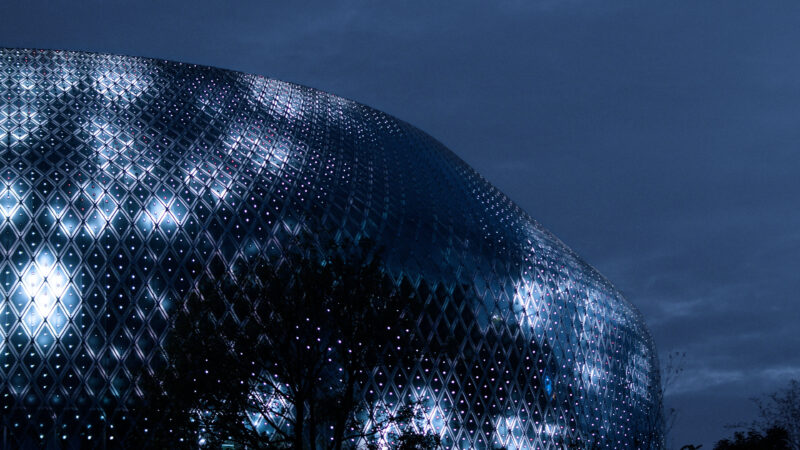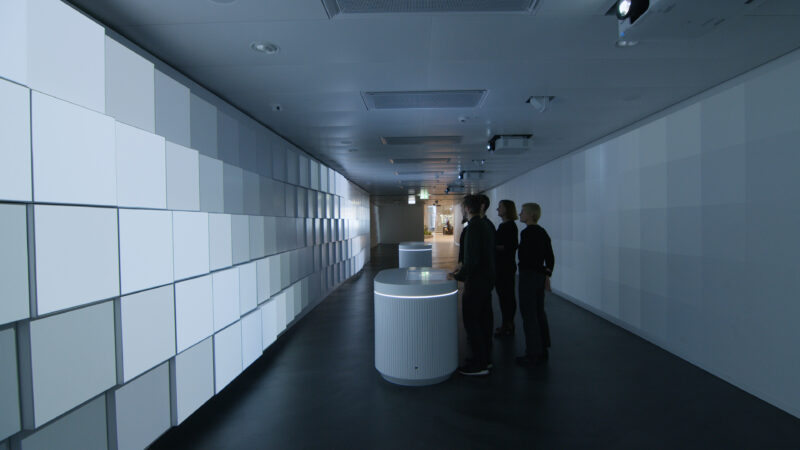The Image of the City
The M+'s large-scale media façade turns the building into a curated, ever-changing exhibition platform. Visible from afar, it establishes the museum as part of Hong Kong's animated skyline.
Overview
M+ is Asia's first global museum of contemporary visual culture. Designed by Herzog & de Meuron in collaboration with TFP Farrels and Arup, the building is located in the Kowloon Cultural District in central Hong Kong. Facing Hong Kong Island, the city-scaled façade displays media art that can be seen from near and far. It extends the appearance of the building at dusk and during the night. In this way, the museum becomes a central attraction within the urban space of the metropolis. iart developed the media façade in collaboration with Herzog & de Meuron.
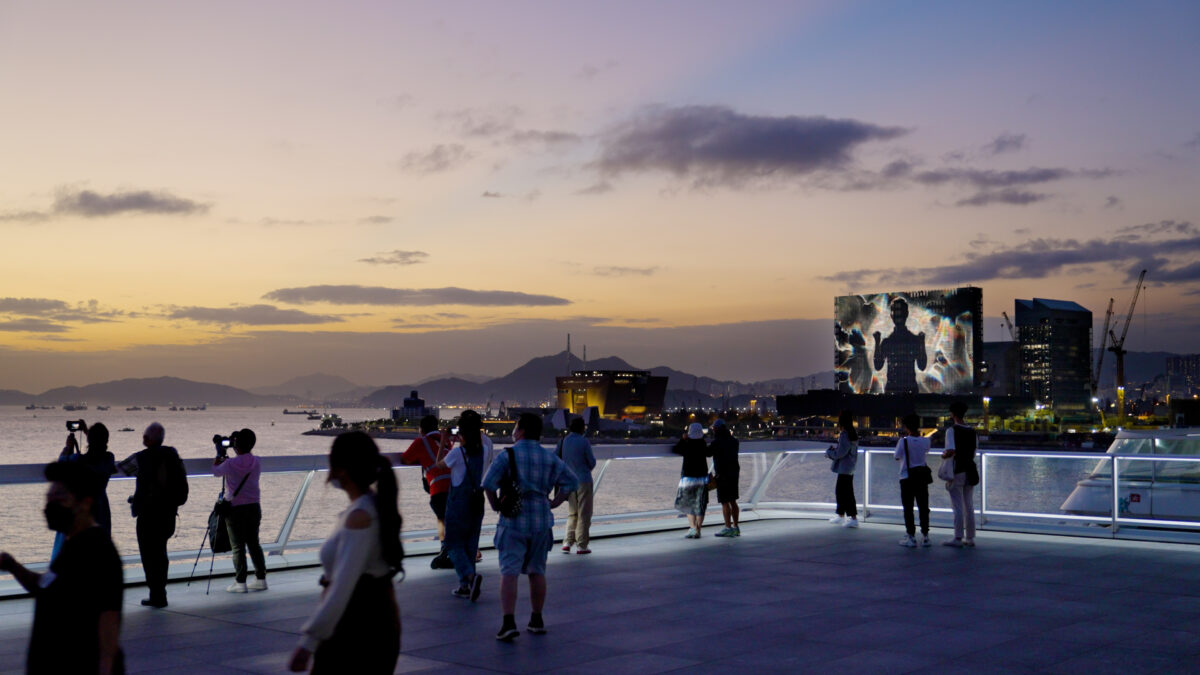

Art in Public Space
Drawing attention to the museum's diverse programmes, the M+ facade features both specially developed works and art from the collection. The dynamic mix of works offers moments of play, humour and poetry to thousands of viewers. Participatory and performative works engage audiences through digital platforms, while others playfully celebrate the plasticity of time with slow and fast cinematic sequences. Since opening in November 2021, two commissioned works have been on view: Ellen Pau's "The Shape of Light" and "Touch for Luck" by Moniker. Many more will follow.
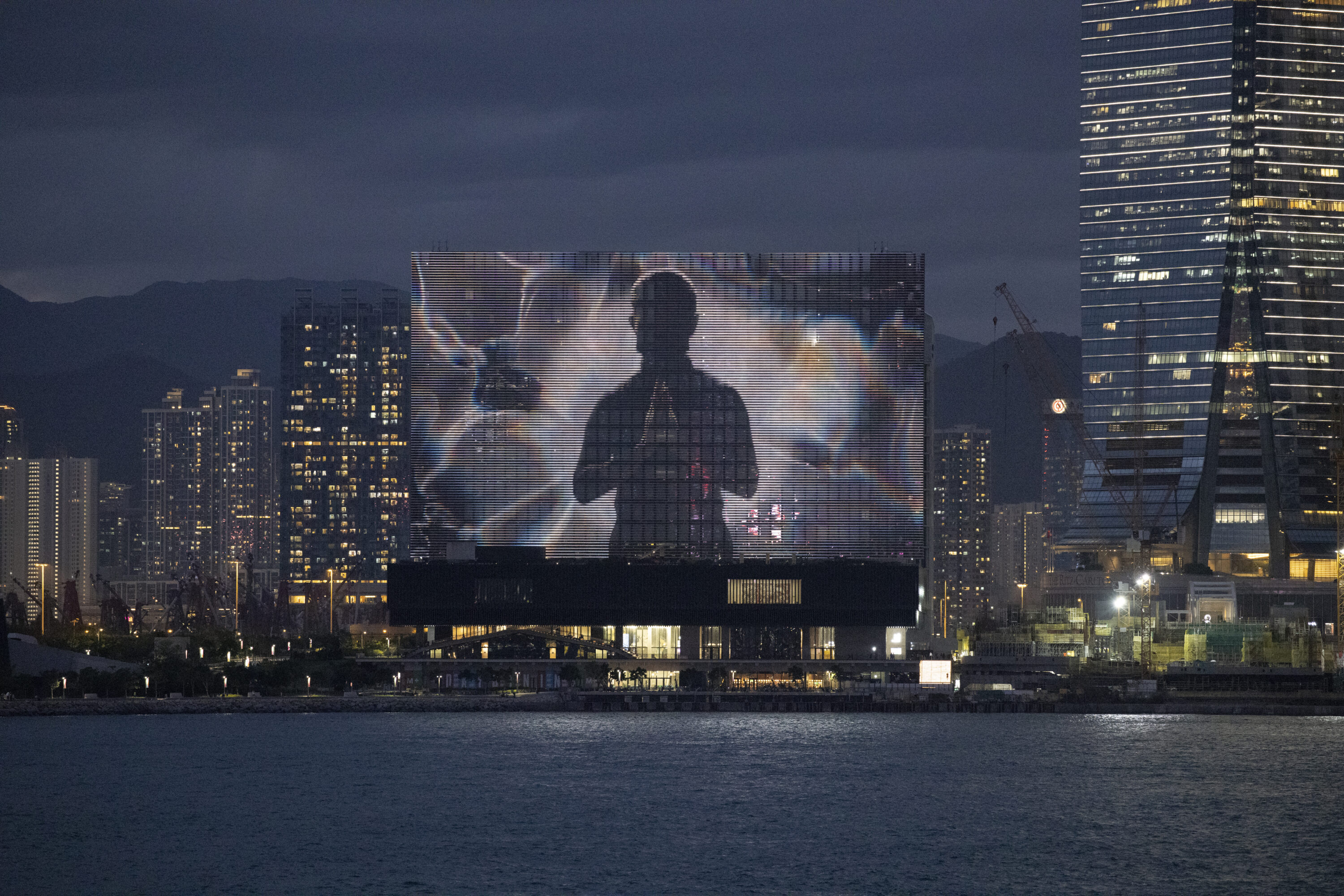
Appearance of the Facade
The towering facade measures 65.8m in height and 110m in width. The entire surface is covered with greenish terracotta modules, which the architects Herzog & de Meuron had specially developed. The ones facing Victoria Harbour feature grooves in which two types of LED lights are embedded. Together, they form a hybrid display system that makes content visible under different lighting conditions and from very different angles and distances. Thus, in the evening hours, the art can be seen from the surrounding art park as well as from Hong Kong Island. This also changes the perceived depth of the façade: in brighter light, it still appears as a semi-transparent structure. In the dark, however, it appears completely opaque.
Technical Facts
- Facade area: 7'238m²
- Height: 65.8 metres
- Width: 110 metres
- Virtual image resolution: 2816x1686 pixels
- 118 physical LED rows
- Every 14 virtual pixel row is actually displayed
- In each row there are 2100 low-power LEDs (close view) and 716 high-power LEDs (distant view)
- Physical distance of pixels: horizontal 15cm, vertical 56cm
- Colour depth of 24bit

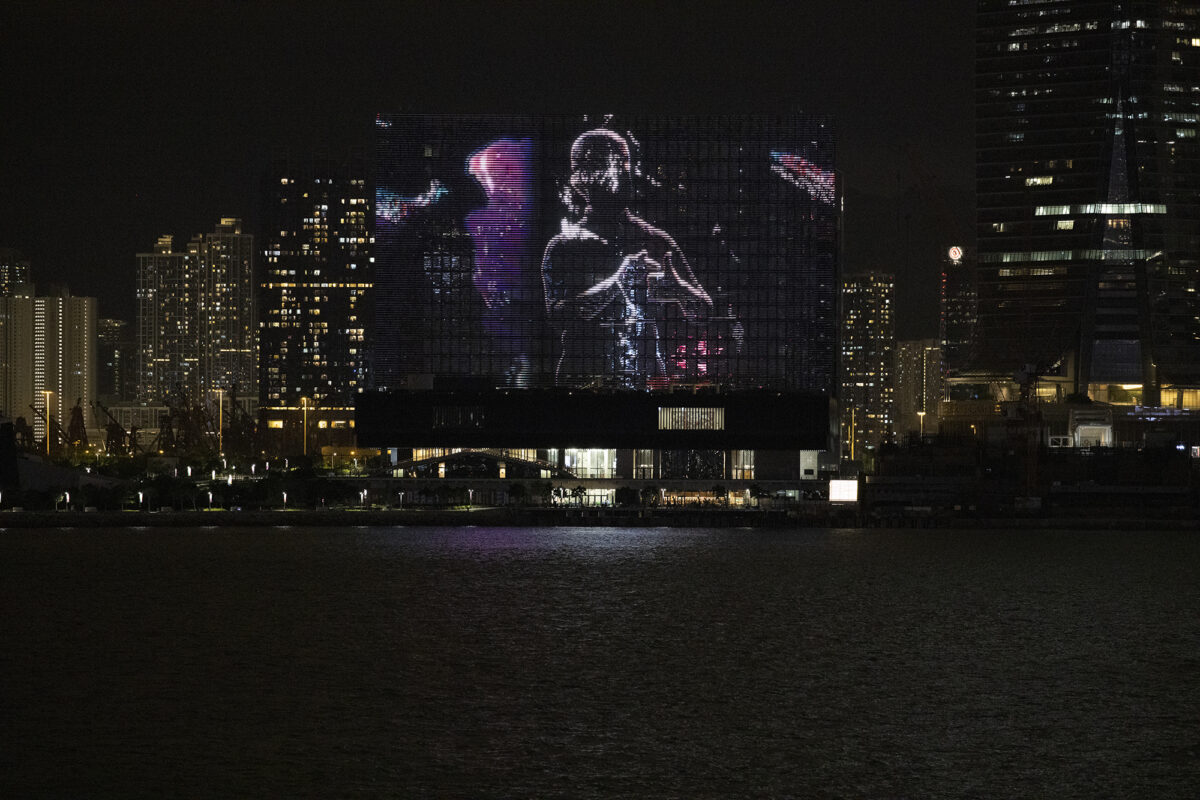
Hybrid Display
To ensure good visibility and legibility from various angles and distances, iart developed a hybrid LED system. Four LEDs with a wide beam angle and one LED with a narrow beam angle are arranged close to each other in the horizontal grooves of the facade. The facade thus provides a high-resolution, wide-beam image for all viewing angles from close up and a coarser-resolution, strong signal for viewing from a distance. In addition, a light sensor measures the quality of the ambient light on site and provides calibration data with which the brightness and colour temperature of the video signal - and thus ultimately also of the facade LEDs - are adapted to the current situation. In order to precisely anticipate the effect of the facade, light tests with physical mock-ups and prefabricated facade elements were carried out during the development process (see video and interview with Valentin Spiess in M+ Magazine).
Playback System
iart developed a real-time simulation to test and optimise the effect of the artworks before they are shown on the facade. The lighting conditions, viewing angles and distances can be varied to anticipate the vistas from very different positions in the urban space. That way, the artists' expectations are matched with the real conditions. In addition, a light sensor measures the quality of the ambient light on site and provides calibration data with which the brightness and colour temperature of the video signal - and thus ultimately also of the facade LEDs - are adapted to the current situation.
Opening
2022
Location
Hong Kong
Client
West Kowloon Cultural District Authority
Partner
Herzog & de Meuron
Services
Project ManagementProject ControllingLight DesignPrototype ConstructionProcess Design and ManagementRequirements ManagementRealtime Simulation & Digital TwinSoftware EngineeringSystem Design and DevelopmentTechnical Planning
Award
Media Architecture Biennale Awards
Winner
